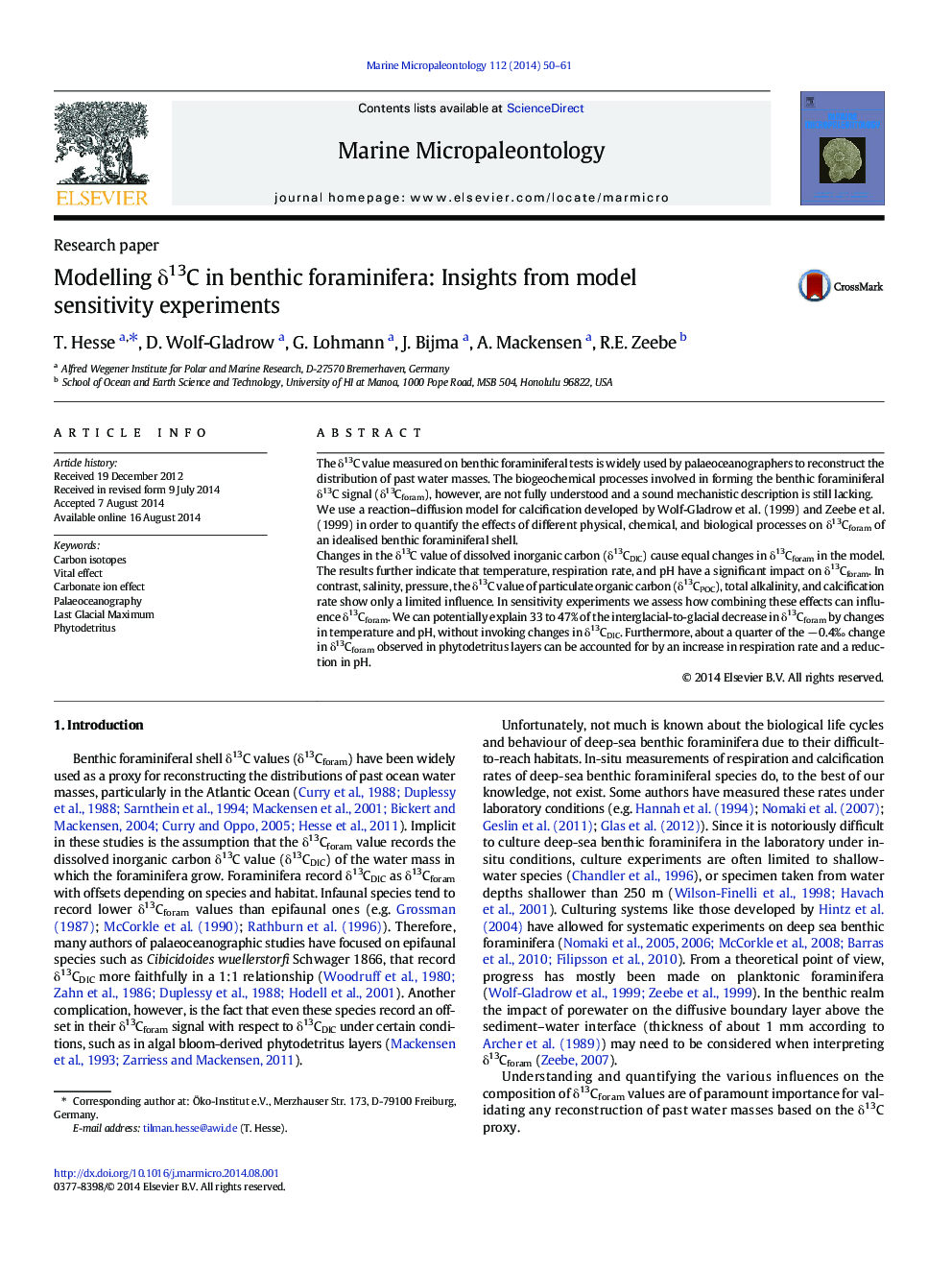| Article ID | Journal | Published Year | Pages | File Type |
|---|---|---|---|---|
| 4748827 | Marine Micropaleontology | 2014 | 12 Pages |
•Development of a diffusion–reaction calcification model for benthic foraminifera•High model sensitivity of temperature, respiration rate, and pH on δ13Cforam•33–47% of glacial drop in δ13Cforam explained without changing δ13CDIC•About a quarter of the drop of δ13Cforam in phytodetritus layer explained
The δ13C value measured on benthic foraminiferal tests is widely used by palaeoceanographers to reconstruct the distribution of past water masses. The biogeochemical processes involved in forming the benthic foraminiferal δ13C signal (δ13Cforam), however, are not fully understood and a sound mechanistic description is still lacking.We use a reaction–diffusion model for calcification developed by Wolf-Gladrow et al. (1999) and Zeebe et al. (1999) in order to quantify the effects of different physical, chemical, and biological processes on δ13Cforam of an idealised benthic foraminiferal shell.Changes in the δ13C value of dissolved inorganic carbon (δ13CDIC) cause equal changes in δ13Cforam in the model. The results further indicate that temperature, respiration rate, and pH have a significant impact on δ13Cforam. In contrast, salinity, pressure, the δ13C value of particulate organic carbon (δ13CPOC), total alkalinity, and calcification rate show only a limited influence. In sensitivity experiments we assess how combining these effects can influence δ13Cforam. We can potentially explain 33 to 47% of the interglacial-to-glacial decrease in δ13Cforam by changes in temperature and pH, without invoking changes in δ13CDIC. Furthermore, about a quarter of the − 0.4‰ change in δ13Cforam observed in phytodetritus layers can be accounted for by an increase in respiration rate and a reduction in pH.
